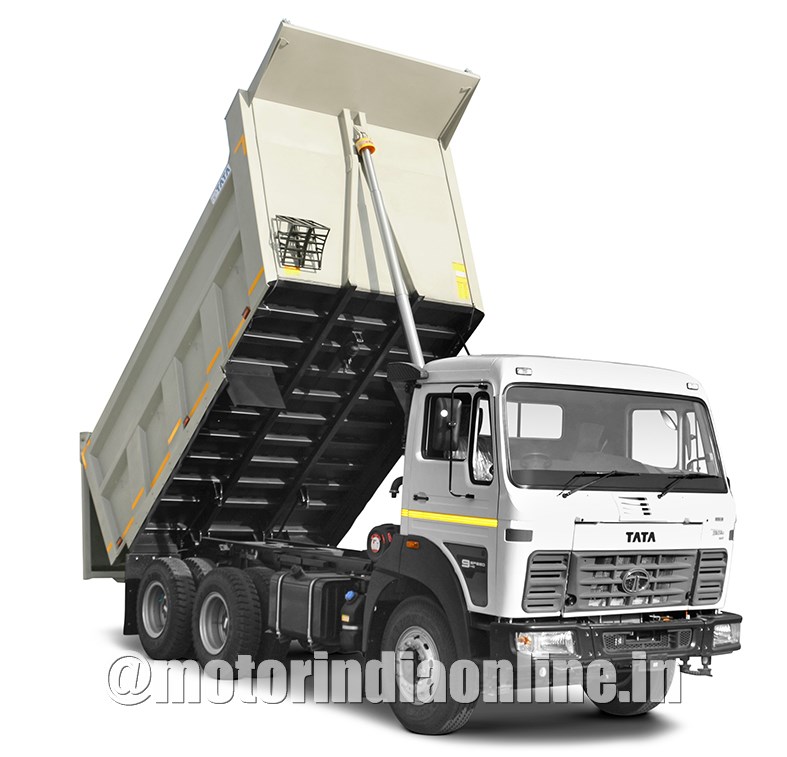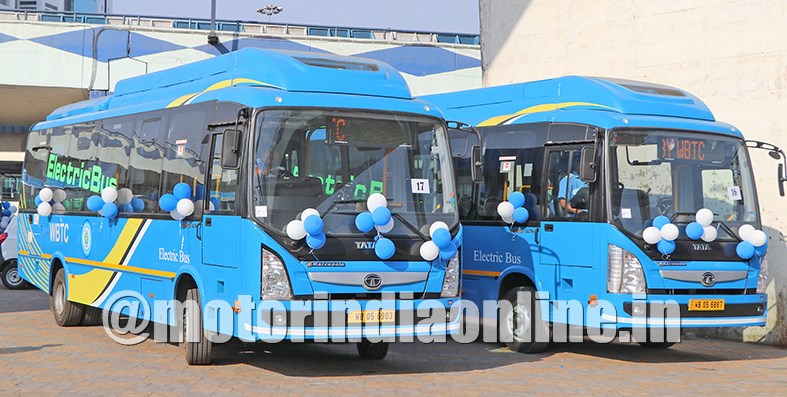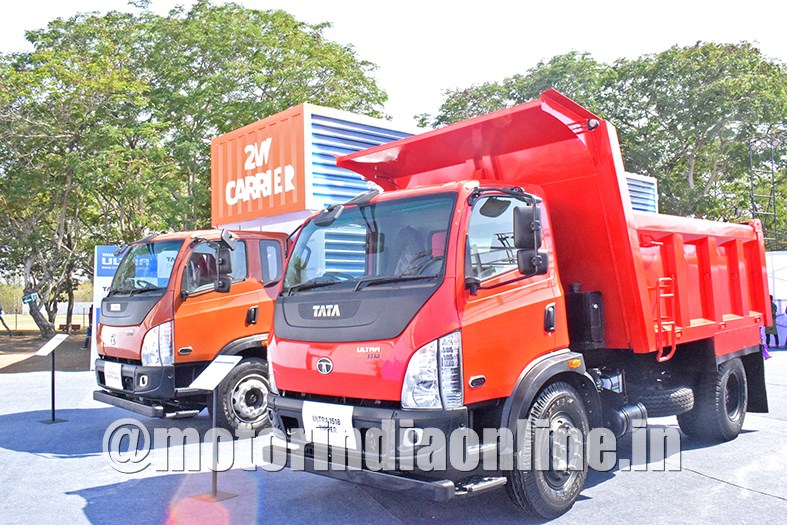The current state of the Indian commercial vehicle industry is known to all. The unexpected slow rate of industrial activity and infrastructure spending has led to the degrowth. Being aware of the areas that need attention, Girish Wagh, President – Commercial Vehicles Business Unit, Tata Motors, opens up to Rajesh Rajgor on cyclical and non-cyclical factors, replacement demand prior to BS-VI, monitoring market and inventory levels, medium- to long-term impact of BS-VI, positives in the bus business and the company’s growing market share in exports.

Excerpts:
Give us a sense of the broad direction that Tata Motors has been taking, in the light of uncertainty in the CV Market in India.
CV industry volumes have been severely impacted this year and this can be attributed to various cyclical and non-cyclical factors. The market continued to exhibit subdued demand as customers had been postponing purchases. Of late, customer vehicle enquiries have increased in M&HCV and I&LCVs, with fleet owners initiating discussions for replacement of older vehicles.
In these uncertain times, we have been continuously engaging with our dealers and customers to better understand their expectations and future plans, and accordingly aligning our actions. Our focus has been on reducing stocks in the entire value chain. Retail sale since Q2 FY-20 has been higher than wholesale by 21%, thereby reducing the dealer stock considerably.
We will continue to focus on reducing the overall system stock throughout, including dealer stock in interest of their profitability and working capital reduction. Similarly, we have also brought down our inventory by continuously aligning production to the actual market demand. We continue to monitor the market and industry cautiously, as we are working very closely with our dealers and other relevant stakeholders to respond to the situation appropriately.
What do you make of the replacement demand, pre-buying and post BS-VI demand, particularly for M&HCVs, tippers and ICVs?
Pre-buying demand was surely expected, as has been the experience, in other developed markets, during similar emission regulation transition. However, the extent of such a pre-buy has panned out to be subdued and delayed due to overall demand slowdown. We believe this is the best time for customers to buy vehicles, keeping in mind the plethora of financial benefits. We are seeing some uptick in demand with drivers and customers looking to replace their old fleet with new BS-IV vehicles prior to the transition to BS-VI norms from April 1, 2020 and we are seeing a clear uptick in the enquiry levels in MHCVs and ILVS from since October.
We are taking calibrated calls to produce vehicles with precise monitoring of the demand situation and closely engaging with customers, channel partners and financiers to ensure that we are meeting the requirements of customers, and not result in any unsold stock of BS-IV vehicles. TML is well placed to make the most of this pickup in demand and especially with the system stock well under control at our channel partners and also at our end, we are seeing an improvement in the price realizations.
How is the demand from SCVs and LCVs, is there any concern in the segment?
Compared to the drop in M&HCVs, the situation in LCVs as well as the SCVs & PUs has been relatively better. These segments have been impacted by the drop in discretionary spending. The salience of SCVs & PUs in the total CV industry grew by 7% this fiscal. In December, we have seen a YoY growth in SCV & PU segments which is good news.
Given the current market scenario, how do you optimise your production and inventory at dealerships across your product range?
With our retail acceleration driven through various levels, across the segments, we have considerably reduced the dealer-owned inventory. We have focused on reducing stocks in the entire value chain while monitoring the market and industry cautiously. We are working very closely with our dealers and other relevant stakeholders to take appropriate measures. We have also brought down our inventory by constantly aligning production to the actual market demand with a sharp focus on cash and cost.
There seems to be a silver lining on the bus front with Tata Motors bagging orders to deliver 2,300 buses to various STUs. Have hybrid and electric buses played a part in this order or is it a mix of both replacement demand for IC engine buses and the fleet expansion by the STUs?
The existing orders are a mix of internal combustion engines and alternative fuels. Various STUs are looking at both replacement of existing vehicles, and increasing their fleet size. There are various factors that have been impacting the growth of the overall bus segment in India and electrification is one of them. The higher demand for inter-city and public transport, growth in the tourism sector along with constant upgradation of better road infrastructure have led to demand in this sector.
While we continue to play strongly in the traditional engine market, we have been at the forefront in supporting the Government’s efforts of electrification with our offerings of best-in-class solution tailored for the bus segment in India. Tata Motors, in the electric public mobility segment, won tenders from 6 cities out of 10 under FAME I scheme. Post these orders, we received an order for 40 buses from Kolkata WBTC STU and another order for 300 buses from Ahmedabad Janmarg Ltd. (AJL), the largest mandate for electric buses in the country so far, for any OEM.
Having said that, the main task, apart from delivering the buses has been to create an infrastructure for the vehicles because electric buses are running for the first time in the country. Therefore, we have been creating a very strong support structure for infrastructure in all cities to ensure buses run well as a result we are seeing an excellent uptime of more than 95%. For the FAME II tenders, we have taken our learnings from the FAME I tenders that includes an information database of more than 1.9 million kms and upgraded and incorporated them in FAME II tenders as well as our future projects.
How is business with respect to exports? Hope your overseas sales are providing good respite during these testing times domestically.
This has been a challenging year even in CV exports, with slowdown seen in our core markets of SAARC, Middle East and Africa. That said, we have managed to either hold onto our position in terms of market share or gain ground by launching new products and services in these markets. We recently launched our Prima and Ultra range in Kuwait and in several ASEAN and African markets. We also bagged the lion’s share of large contracts in the Middle East thereby, establishing ourselves as the preferred brand in those markets even during a challenging business environment. Our international business strategy is core to our overall CV strategy and we will continue pursuing opportunities by introducing new products for new segments and by entering new geographies. Given our continuous focus on aftersales service, we have significantly managed to consolidate and improve our customer satisfaction levels across markets as well.
Lastly, what is your outlook for the coming months and how do you see the current fiscal closing out?
The CV industry, every 5-6 years, goes through a cycle of a few years of growth and then a downturn before getting back on the growth track. While we were anticipating a slowdown in FY20-21 after an expected peak in FY20 due to the anticipated pre-buying, we witnessed a slowdown in FY20 itself as the industry faced challenges like excess capacity created after the increased axle load norms, the liquidity crisis, and the slowing economic activity.
We are looking forward to a positive impact of the recently announced relief package by the Government, and overall pick-up in the economy which is likely to be boosted by growth in the industrial production, mining and infrastructure projects and overall consumption. That being said, it is impossible to place an exact timeline and the resurgence that could follow. Amidst uncertainties, challenging economic scenario and subsequent BS-VI transition in April, the CV industry may close the current fiscal at a deficit of 23-25% compared to FY19.


